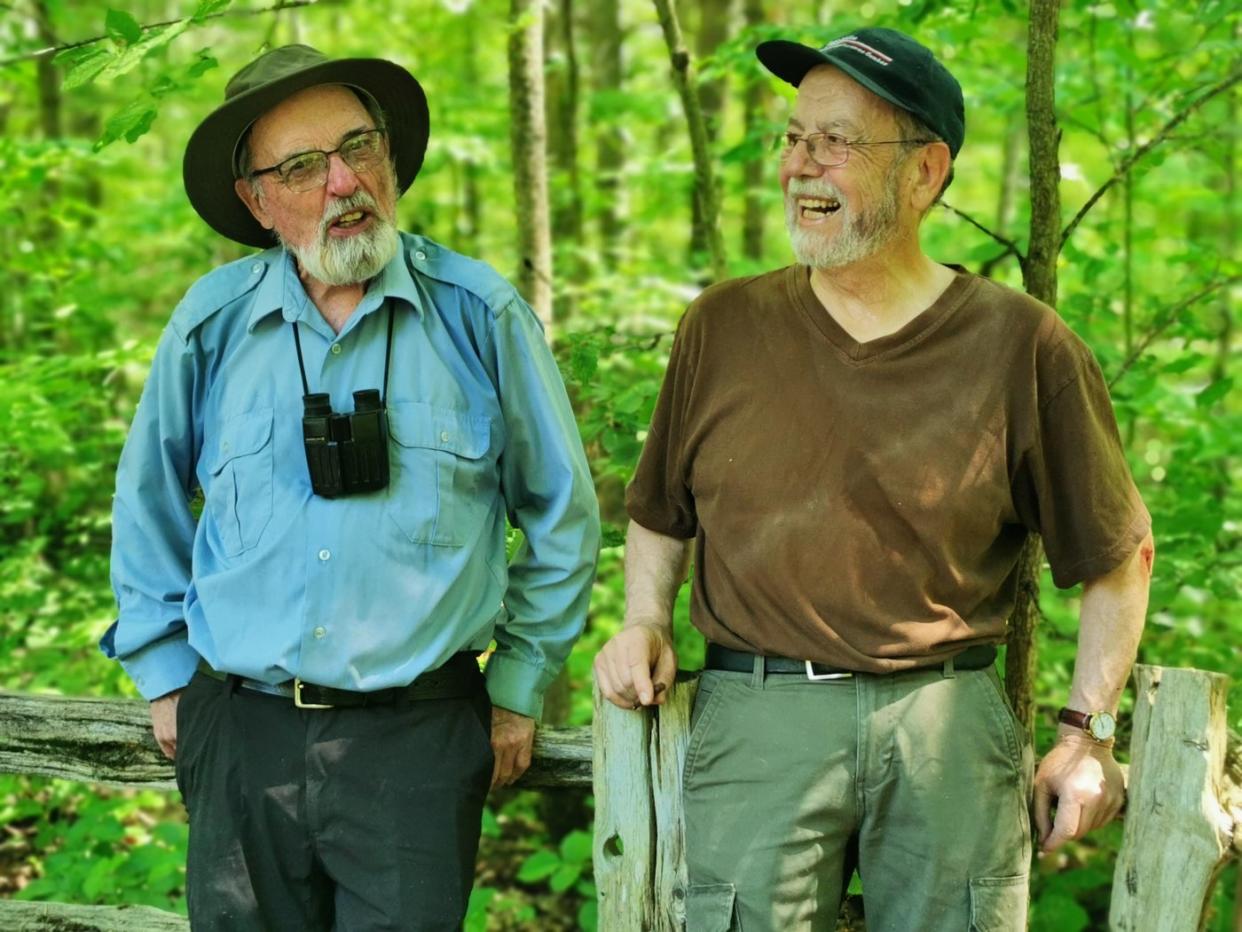Mink Creek's elusive tufa rock sustains endangered dragonfly

Naturalists Bob Bowles and Dieter Mueller spent Monday afternoon trudging through the forest at Historic Fort Willow looking for tufa rock in Mink Creek.
For Mueller, 75, it was an opportunity to track the growth of tufa, a geological formation that is not common in this part of the world.
And for Bowles, 79, it was a chance to spot the Hine’s emerald dragonfly, an extremely rare flying insect that was added to Ontario's list of species at risk in 2012.
It was thought to be extinct, but was rediscovered in 1987 at the Nature Conservancy’s Mink River Preserve in Door County, Wis.
The species is also listed as endangered in the U.S. and is globally imperiled.
The Hine’s emerald — a medium-sized dragonfly of about six centimetres long, with bright green eyes, a metallic green thorax with two lateral yellow stripes, and a blackish-brown abdomen — has one habitat in Canada and that is at Historic Fort Willow, located about 20 minutes west of Barrie.
Bowles, a well-known local naturalist and Earth sciences teacher, brought along a net in hopes of catching one of the elusive beasts, but left empty handed.
One was spotted, but from a distance, and it disappeared almost instantly, buzzing off in the opposite direction as Bowles approached.
“The Hine's emerald is found here and nowhere else in the country,” Bowles said. “The dragonfly nymphs (larvae) need water and they’re deposited in the tiny holes in the tufa.”
According to Bowles, during a heat spell, when most of the water dries up, the tufa rock will still contain some moisture deep in its crevices and pores.
“This is sedimentary rock — it’s full of calcium carbonate,” he said. “It’s very important because there are certain species that are calciphiles; they don’t exist in any other condition.”
According to Mueller, a retired business administrator and economist with a passion for nature, geography and history, tufa grows in the Fort Willow area due to the large deposit of limestone gravel that’s below ground. When it meets acidic groundwater, tufa forms.
“The tufa rock deposits in the Mink Creek are quite unique,” said the Barrie resident. “They are the only place in the world where tufa is made from groundwater that has dissolved calcium from limestone gravel, dust and dirt.”
Mostly calcium carbonate, the same mineral that makes up limestone and marble, tufa forms through a process called precipitation or chemical deposition.
When calcium-rich groundwater travels through these porous rocks, it dissolves some of the calcium carbonate. As the water emerges to the surface, often in the form of springs or seeps, it comes into contact with the air, causing a chemical reaction.
Mueller says he discovered the tufa deposits three years ago when he was out exploring the forests around Fort Willow, something he’s been doing since the early 1990s.
Recognized as both a provincial and national historic site, Fort Willow sits within the Nottawasaga Valley Conservation Authority (NVCA) watershed and is generally protected from land-use changes through provincial, municipal and conservation authority planning policies and regulations.
It was used as a supply depot during the War of 1812.
The area was also actively used for centuries by First Nations, the fur trade and French explorers as part of a major transportation route known as the Nine Mile Portage.
Mueller theorizes that the water from Mink Creek was a huge benefit to the soldiers who were stationed at Fort Willow.
“The soldiers who came here were drinkers,” he said. “Likely a bottle of rum every day and they’d wake up hung over.
“I’m sure they would have taken water straight from the Mink — it would have settled them down like an antacid," Mueller added.
While not widely known for its medicinal benefits, the water that flows through Mink Creek powers the development of tufa and supports the existence of untold numbers of plant and animal species.
In 2018, the Nature Conservancy of Canada (NCC) acquired the Patrick W. E. Hodgson property, a 43-hectare piece of land in the Minesing Wetlands that contains a variety of habitat types that are important for this particular dragonfly.
In 2020, the NCC acquired the Baldwick Bluff property, which is connected to the Patrick W.E. Hodgson property. The Baldwick Bluff property serves as another 33 hectares of habitat for Hine’s emerald.
The NCC, in partnership with the NVCA, has developed a restoration plan for the properties that have Hine’s emerald dragonfly as a priority.
Wayne Doyle, Local Journalism Initiative Reporter, BarrieToday.com


